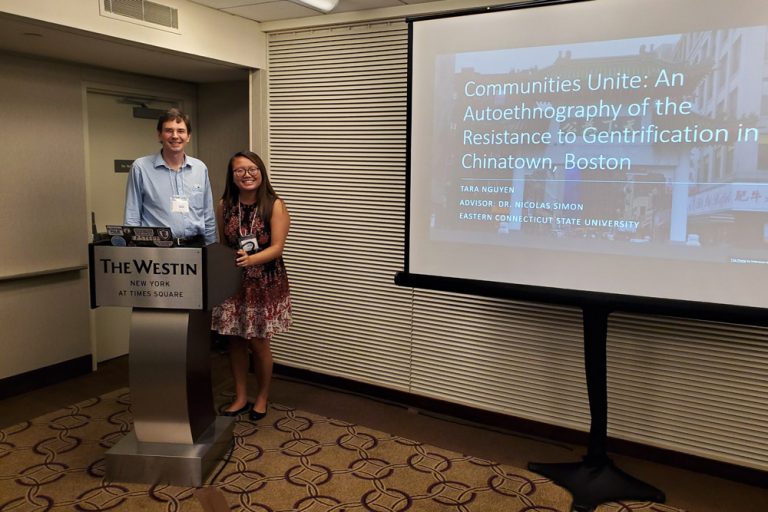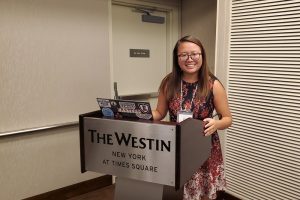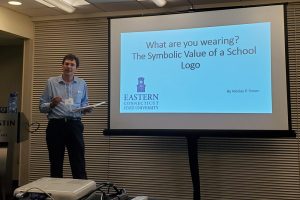


Published on August 27, 2019

Sociology Professor Nicolas Simon and student Tara Nguyen presented at the annual Society for the Study of Symbolic Interaction Conference this past August.
Eastern Connecticut State University Sociology Professor Nicolas Simon and student Tara Nguyen ’21 presented and organized a session at the 2019 annual Society for the Study of Symbolic Interaction (SSSI) Conference on August 9–11 in New York City.
They organized a session titled “‘The Next Generation’: Outstanding Symbolic Interactionist Undergraduate Papers,” which highlighted undergraduate research on the topic of symbolic interactionism — a theory that examines how humans impose their subjective meanings on objects, events and behaviors. To organize the session, Simon and Nguyen reached out to faculty members and students from colleges and universities in New York, Pennsylvania, Connecticut and Massachusetts. They also reviewed student applications and abstracts to determine who to invite to the session. The SSSI primarily features research by Ph.D. students and professors, so Simon and Nguyen’s session was a rare opportunity for undergraduate students to participate in the conference.
Nguyen, a sociology major, was among the undergraduate presenters. Her presentation was titled “Communities Unite: An Autoethnography of the Resistance to Gentrification in Chinatown, Boston.” Gentrification is a topic that Nguyen has been studying with Simon, her faculty mentor.
Nguyen’s research focused on social inequalities within the Asian American community through the lens of intersectionality and critical race theory—which consider how various social identities overlap in the context of race, law and power. She addressed the issue of gentrification in Boston’s Chinatown and discussed what activists are doing to fight it.
Professor Simon also presented at the conference during a session titled “Self and Object.” His presentation was titled “What are you wearing? The Symbolic Value of a School Logo.” His research focused on the concept of “symbolic value” and the relationships that individuals, groups and societies have with symbols.
Simon has been a member of the SSSI since 2011 and has organized other sessions for undergraduate students in the past. He noted that he wants to continue to promote the next generation of symbolic interactionist researchers and help other students as professors have done for him in the past.
“I think it is important to encourage students who want to go to graduate school to present their work at a professional conference,” he said. “The first time I went to the SSSI annual conference in 2011, I was invited by my professor, Dr. Clint Sanders at the University of Connecticut. I was his teaching assistant and took a course with him in the fall of 2010. He invited all of us to present our work at the SSSI annual conference. It was a terrific experience!”
Nguyen commented on her own experience at the conference. “The experience was intense, but very rewarding. I was glad to help give other undergraduate students the opportunity to present their research at a conference filled with Ph.D. students and professors.”
She plans on continuing to research other topics related to social inequalities in the Asian American community and pursue a Ph.D. program in either education or social policy.
Written by Vania Galicia